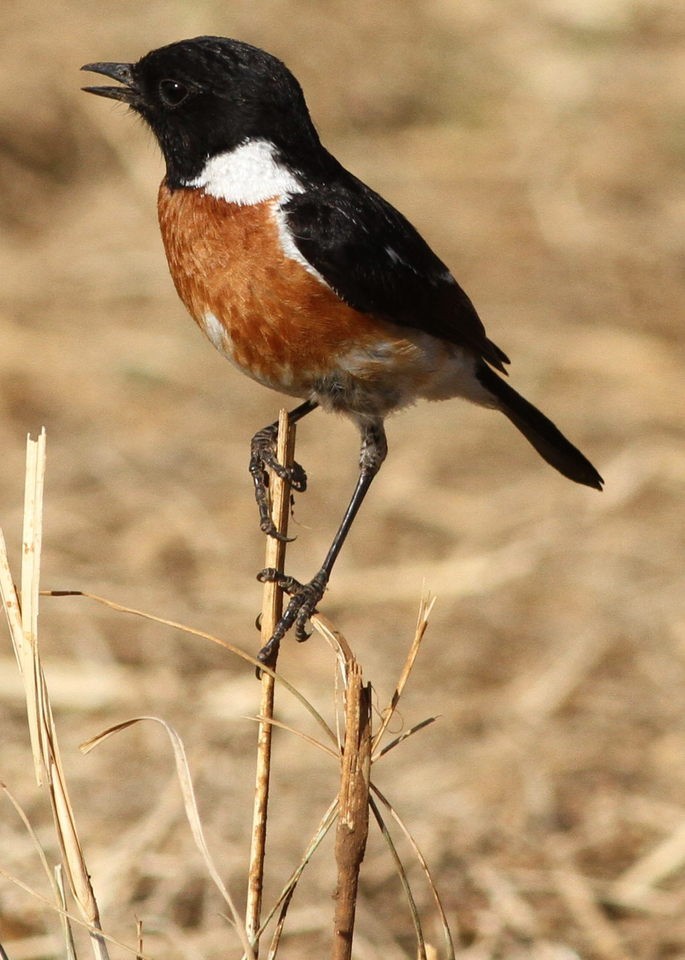African Stonechat
A species of Stonechats and Bush Chats, Also known as Stone Chat Scientific name : Saxicola torquatus Genus : Stonechats and Bush Chats
African Stonechat, A species of Stonechats and Bush Chats
Also known as:
Stone Chat
Botanical name: Saxicola torquatus
Genus: Stonechats and Bush Chats
Content
Description General Info
Description
The males have a black head, a white half-collar, a black back, a white rump, and a black tail; the wings are black with a large white patch on the top side of the inner wing. The upper breast is usually dark orange-red, with a sharp or gradual transition to white or pale orange on the lower breast and belly depending on subspecies. In a few, black replaces the orange breast feathers in part or entirely. Females have brown rather than black above and on the head with an indistinct paler eyebrow line, chestnut-buff rather than orange below, and less white on the wings. Both sexes' plumage is somewhat duller and streakier outside the breeding season. 
Size
13 cm (5.25 in)
Colors
Brown
Black
Gray
White
Orange
Life Expectancy
9 years
Nest Placement
Ground
Feeding Habits
African Stonechat's diet comprises invertebrates, small vertebrates, fruit, and seeds. They are adept foragers, often seen hunting or gleaning food from the ground or vegetation. African Stonechat display unique preferences for certain insects and are known for their varied diet.
Habitat
African Stonechat's habitat spans open landscapes including grassy hillsides and shrubby moorlands, as well as heathlands with gorse and heather. It inhabits sea level to high montane areas, primarily between 1000 and 3000 meters in sub-Saharan Africa. This bird is also found in agricultural margins, bushy pastures, and sometimes arid regions with oases.
Dite type
Insectivorous
General Info
Feeding Habits
Bird food type
Distribution Area
It has a scattered distribution across much of sub-Saharan Africa, occurring locally as far north as Senegal and Ethiopia. Outlying populations are found the mountains of southwest Arabia and on Madagascar and Grande Comore. It is non-migratory, moving only locally if at all. As a result, it has developed much regional variation, being divided into about 15 subspecies. 
Species Status
Not globally threatened.
Scientific Classification
Phylum
Chordates Class
Birds Order
Perching birds Family
Old world flycatchers Species
African Stonechat 